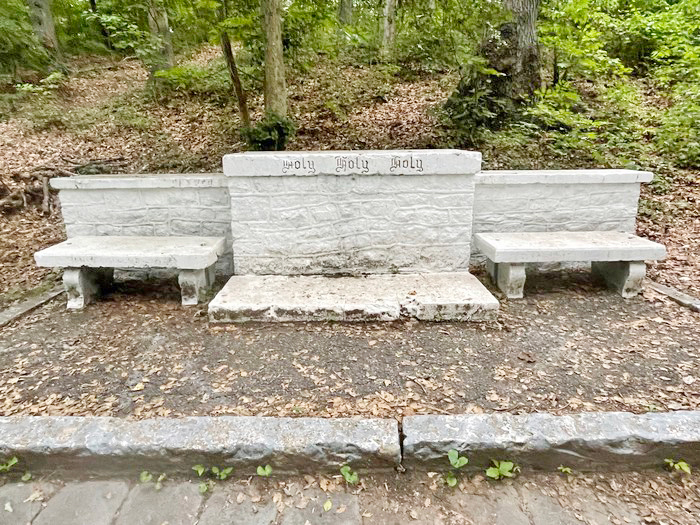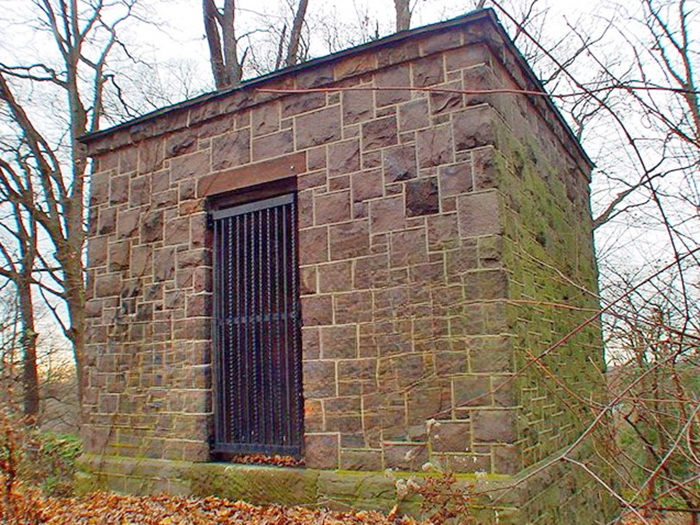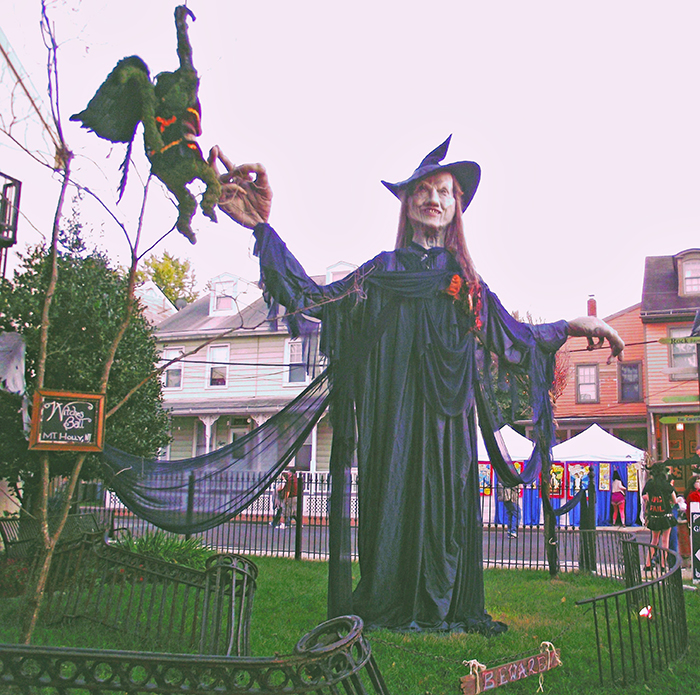By Pam Teel
Whether the Witch Trials are an urban legend or a bit of unrecorded history, we will never know. What we do have are stories passed down through generations and experiences from people brave enough to seek out the supernatural unknown.
Mount Holly, NJ is steeped in history, from the colonial era (1677), through the Revolutionary era, where in 1776, Colonel Samuel Griffin of the Continental Army crossed the Delaware with 600 untrained young men and set up artillery on a hill, in a town that later was named Mount Holly. They were there to divert a division of the Hessian army who were on their way to another battle in Trenton. Thinking the American army was 2000 men strong and not a mere 600, the Hessians laid ground and began a three-day battle exchanging artillery over the area of the mount. In the meantime, General George Washington was crossing the Delaware making ready to do battle the very next day. Those brave 600 men were successful in keeping the enemy’s army detained at the Mount while Washington succeeded in the battle that was to ensue the very next day in Trenton. Had it not been for the Battle on the Mount and had the Hessian soldiers successfully joined forces with the rest of their army in Trenton, the Battle of Trenton might not have been one of glory for General Washington.
So, the witch hunt story begins, about 40 years after the witch trials in Salem, Massachusetts, more sorcery was detected in Mount Holly, New Jersey. According to an article published in the Oct. 22, 1730, issue of the Pennsylvania Gazette, a wizard and a witch were put on trial for making a “sheep dance in an uncommon manner” and “causing hogs to sing and speak in psalms.” The witch and the wizard were supposedly put through a series of tests by about 300 townspeople. I guess we can all predict their fate, though historians pass these witch trials off as a story or a hoax perpetrated by none other than Ben Franklin, who owned the Pennsylvania Gazette at the time the article was published. He was the only contributor to the paper at the time, but he wrote under multiple names to make it appear as though more people contributed to his publication than actually did. His motive was to sell papers.

What’s interesting is the place where judgment and the consequences of that judgment took place. It was a piece of land, the very same Mount where the young Americans fought for freedom back in the Revolutionary War. Originally, the area was known as Crips Mount after John Crips built the first house on top of the hill. After that, for some bizarre reason, an altar was built in the woods on the side of the mount. A well was also known to be on the property along with large rocks on the ground that looked like a road once went through the area. In 1925, the army built an observation tower on top of the hill but took it down due to the number of trespassers it encountered all wanting to look out on the lights they could see from Philadelphia at night.
Not far off from the tower where the well and altar were, the supposedly first witch trial occurred. After the trial was over, a woman accused of being a witch was thrown into the well. Legend has it that she did not die so suddenly and her cries for help could be heard for days. It was said her hands were bloodied from knocking on the wall of the well. After she finally died, a shed was built over the well, possibly to keep people from falling into the well, or perhaps to keep her soul locked in. It was said that after she died, people could still hear her screams in the night. Some who knocked on the shed door received knocks back from the inside. For some reason, and as stories grew bigger, the site brought about many curious seekers. Later a stone structure was built over the site. Some say it was an old pump house that was built over the Witch’s Well to supply water to the tower.
Close by on the mount, in the middle of the woods, the stone altar still lies with the inscription Holy, Holy, Holy on it. This is the site where they supposedly judged the so-called witches. It was also said that some people accused of witchery were hung on gallows poles nearby. It is a mysterious site in the middle of the woods. Laid out is a concrete table 4x8x4 looking like a sacrificial table. In front of the altar are old wooden benches.
There was also some local folktale of the Jersey Devil being chained up inside the altar. Supposedly, if you put your ear to it, you could hear his chains rattling. Also, it was told that there was a deep shaft that ran below the altar. There is also an old cemetery right down the hill. In it was the grave of a young girl who, legend has it, was one who summoned the Devil to her. The Jersey Devil ended up killing her. The inscription on her gravestone reads; “Thus is the fate of all who turn from God.”

What’s strange about the present sight of the witch’s well is that it is sealed off with a fence and barbed wire around it. There is an iron gate on the building covering the witch’s well. There are infrared security cameras and a recorded message stating not to take pictures and to leave or you will be prosecuted. Though the site has been subjected to much vandalism, the gate to the well is padlocked with a few locks and is still secure.
Interestingly, the Mount also has, I believe two, geodetic survey reference markers monitored by the US Coast Guard. One marker reads 1837 on it. These markers are placed at various places all over the state to measure topographic changes in the earth’s crustal motion, tides, and polar motion.
Whether you believe Mount Holly was named after the Mount and the inscription on the altar reading the word Holy three times, or the fact that the Mount had many native holly bushes on it, one can’t dismiss the fact that sometimes folklore begins with a truth.
Mount Holly is rich in history. Its historic district is a good weekend ride for those looking to explore, with old registered buildings, good restaurants, and many historic sites to see. It’s just a short journey down Route 537, heading toward Chesterfield. Every first weekend in October, the town hosts the Witches Ball, complete with vendors and opened retail shops. The event draws over 5,000 people to the historic part of town. Be a part of it and wear your Halloween costume there. You can access information on the town site. https://twp.mountholly.nj.us/#
The Mount Holly Historic District is a 260-acre (110 ha) historic district encompassing downtown Mount Holly. It was added to the National Register of Historic Places on February 20, 1973, for its significance in architecture, education, landscape architecture, politics/government, and transportation. The district includes 39 contributing buildings. The individually listed Old Schoolhouse, also known as the Brainerd School, was built in 1759 and contributes to the district. The Burlington County Prison is also listed individually and was listed as a National Historic Landmark in 1986. The prison is said to be haunted and is open some nights as part of a ghost walk. There is also an old cabin that was preserved after it was found buried in mud when the courthouse was built. The Burlington County Courthouse was designed by architect Samuel Lewis and constructed by Michael Rush in 1796. Happy Hauntings!

